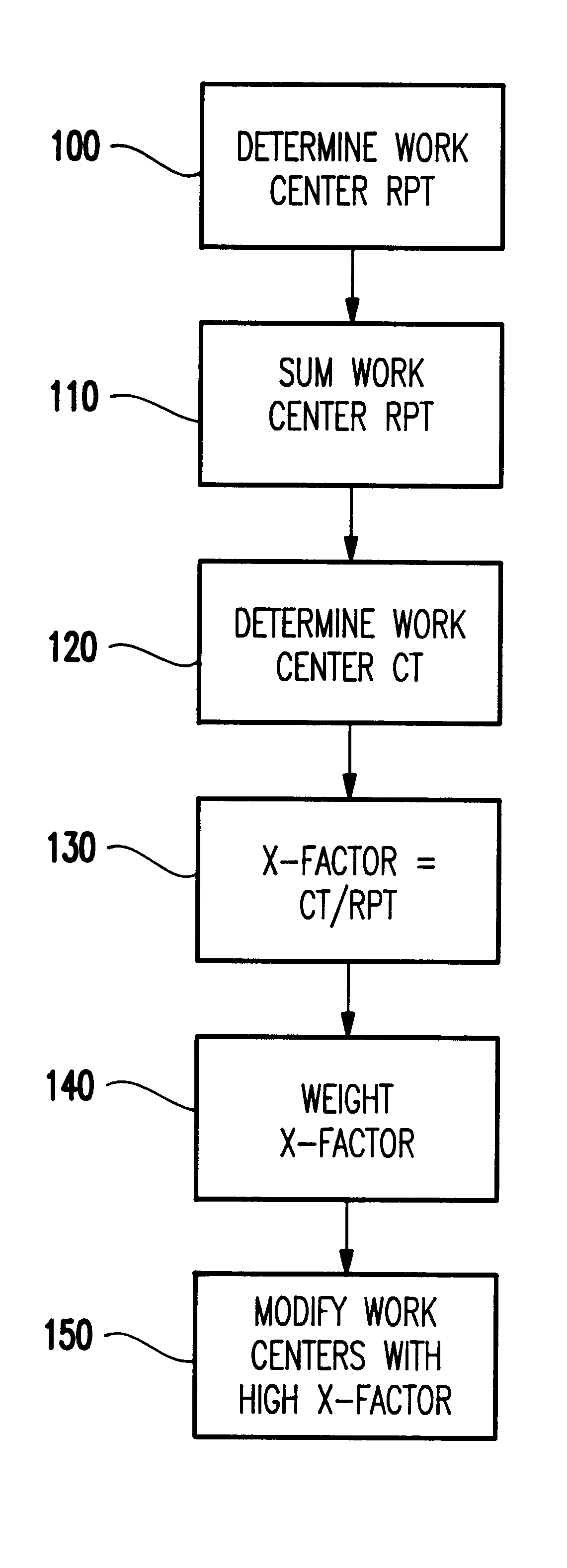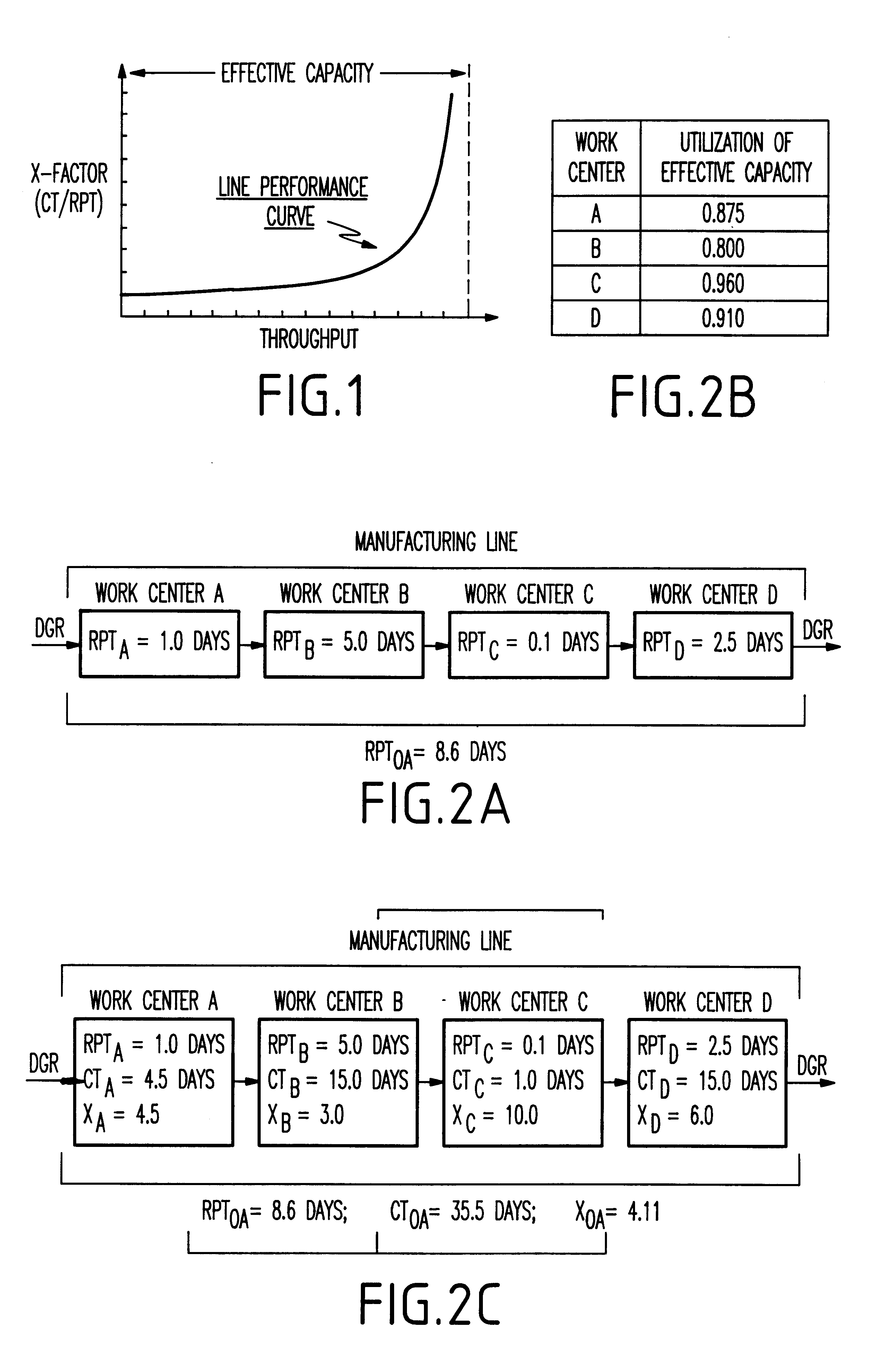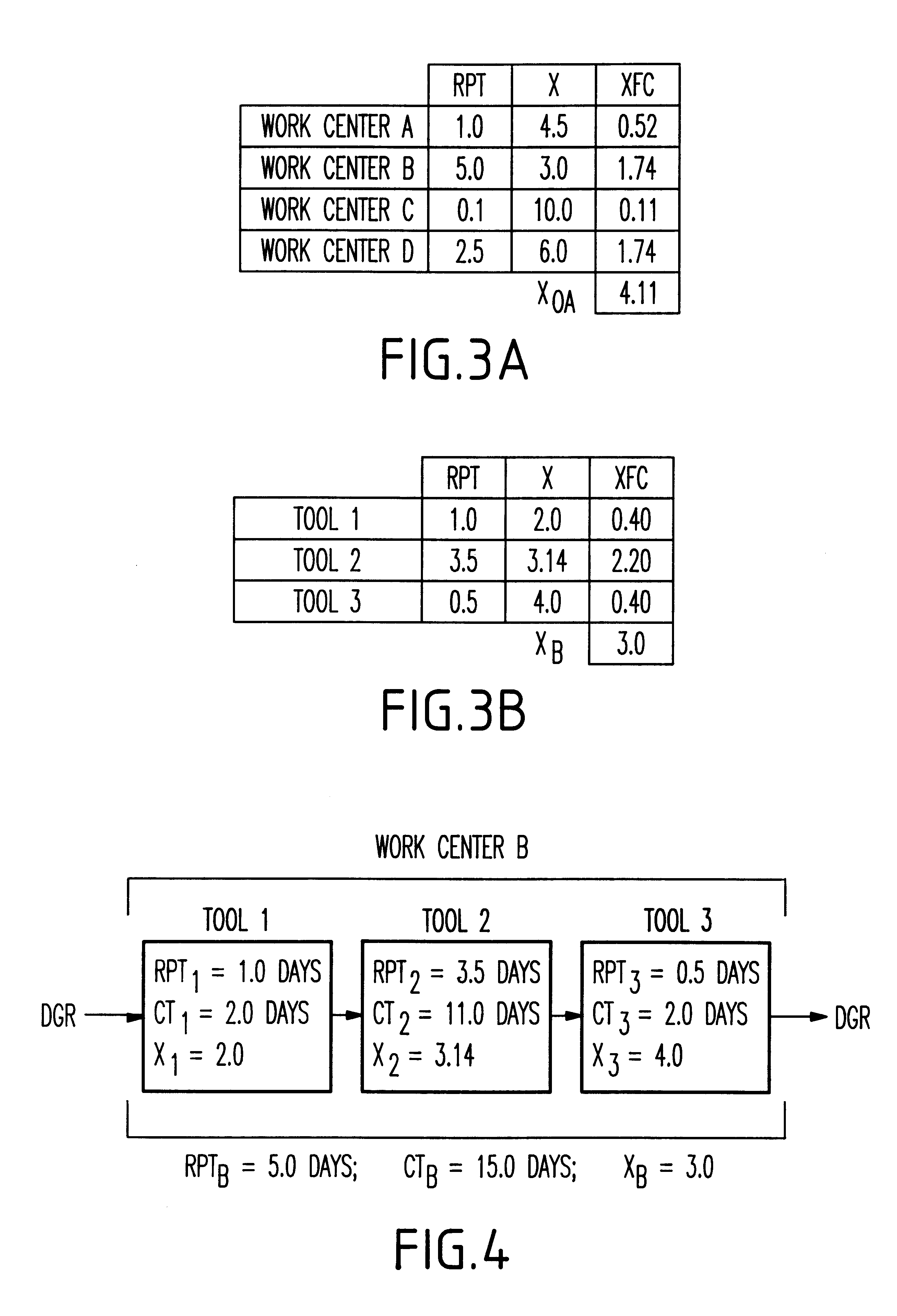Method for determining the performance components of a manufacturing line
- Summary
- Abstract
- Description
- Claims
- Application Information
AI Technical Summary
Benefits of technology
Problems solved by technology
Method used
Image
Examples
Embodiment Construction
In semiconductor manufacturing an increase in utilization of effective capacity results in longer cycle times. For example, FIG. 1 illustrates a production line performance curve where an X-factor (normalized cycle time) is shown on the y-axis and throughput is shown on the x-axis. The X-factor is generally referred to as cycle time divided by raw process time where the cycle time is the time necessary for a workpiece to wait for the tool and be processed by the tool and raw processing time is only the time necessary for the tool to actually work on the workpiece. The "effective capacity" in FIG. 1 represents the maximum throughput available for a given production line.
A relationship exists between tool utilization and the normalized cycle time (X-factor) of the product moving through these tools. For example, an equation to describe this interrelationship can be expressed as ##EQU1##
where UTIL represents the utilization of the effective capacity of a given tool or toolset. Equation...
PUM
 Login to View More
Login to View More Abstract
Description
Claims
Application Information
 Login to View More
Login to View More - R&D
- Intellectual Property
- Life Sciences
- Materials
- Tech Scout
- Unparalleled Data Quality
- Higher Quality Content
- 60% Fewer Hallucinations
Browse by: Latest US Patents, China's latest patents, Technical Efficacy Thesaurus, Application Domain, Technology Topic, Popular Technical Reports.
© 2025 PatSnap. All rights reserved.Legal|Privacy policy|Modern Slavery Act Transparency Statement|Sitemap|About US| Contact US: help@patsnap.com



